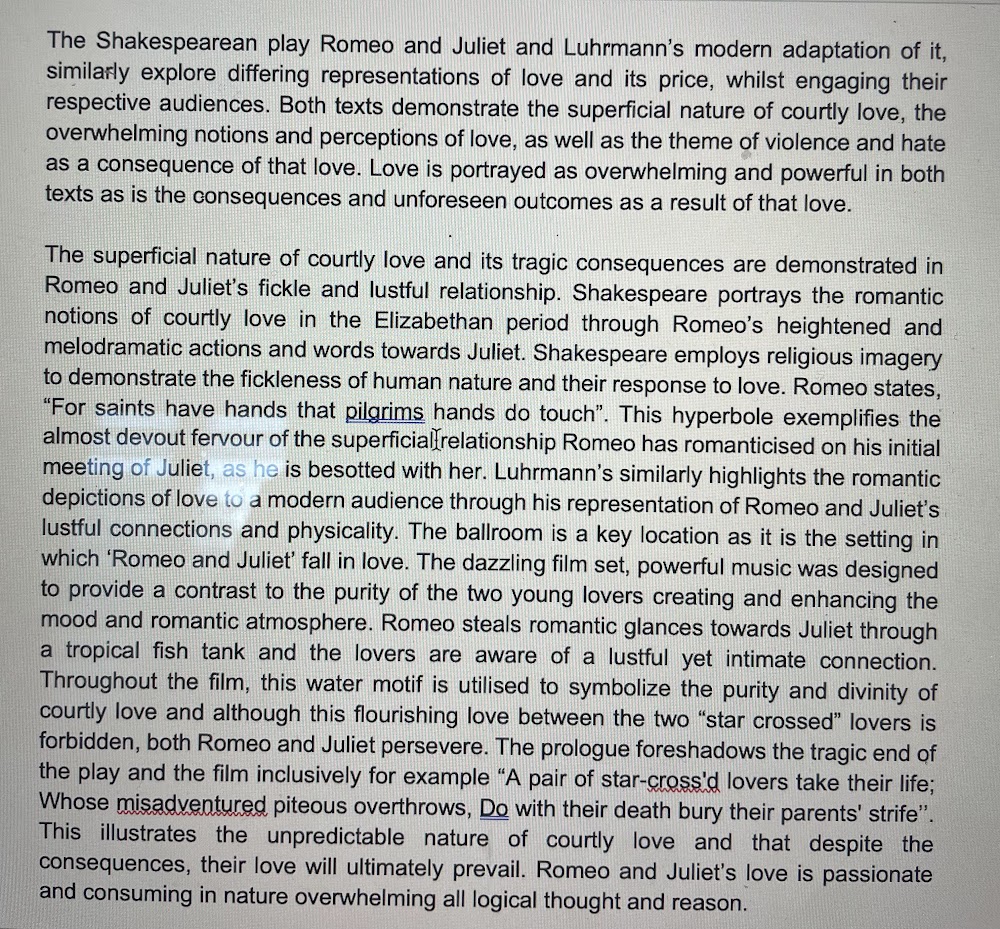
Studying Romeo and Juliet by William Shakespeare is a typical, and fundamental high school text for all students throughout high school. This famous tragedy follows the doomed love of two youth from feuding families—whose secret romance leads to devastating consequences. When approaching the play, it helps for students to first break down the key themes and language techniques, so students are able to comprehend its value. Major themes include love versus hate, as Romeo and Juliet’s deep affection is constantly challenged by the violent feud; fate and destiny, with the “star-cross’d lovers” line suggesting their lives are already mapped out; and youth and impulsiveness, shown in how quickly they fall in love and make life-changing decisions. Conflict is further present in the play—between families, within characters, and between individual desires and social expectations; Challenging students to consider themes like loyalty and family conflict may place them at a different standard to others, and is encouraged for more powerful writing.
Shakespeare’s language is rich and layered, so students must keep an eye out for his techniques. Metaphors and similes appear frequently, like when Romeo compares Juliet to the sun, showing how he idealises her. Oxymorons such as “loving hate” or “sweet sorrow” highlight emotional confusion, while dramatic irony creates tension, a core aspect of Shakespeare’s dramatic form—for example, the audience knows Juliet isn’t truly dead, but Romeo does not. When I have taught this play numerous times in the past, it was important to first let the students consider the structure of the play; it is written in iambic pentameter, a poetic rhythm that sounds natural but controlled, showing Shakespeare’s skill with verse. Studying this play also means looking at how scenes shift tone—from romantic to violent to tragic—and how Shakespeare builds suspense through turning points like Mercutio’s death or Juliet’s decision to fake her own. For students in Years 7–10, I have found t’s useful to annotate key passages, summarise each scene, and practise writing about how characters change over time. Understanding the social and historical context—like Elizabethan attitudes to marriage and family honour—can also deepen your analysis. By focusing on themes, techniques, and characters, you’ll not only understand the play better, but also build skills that apply to all kinds of literature studies.
Eleni Nicholas

